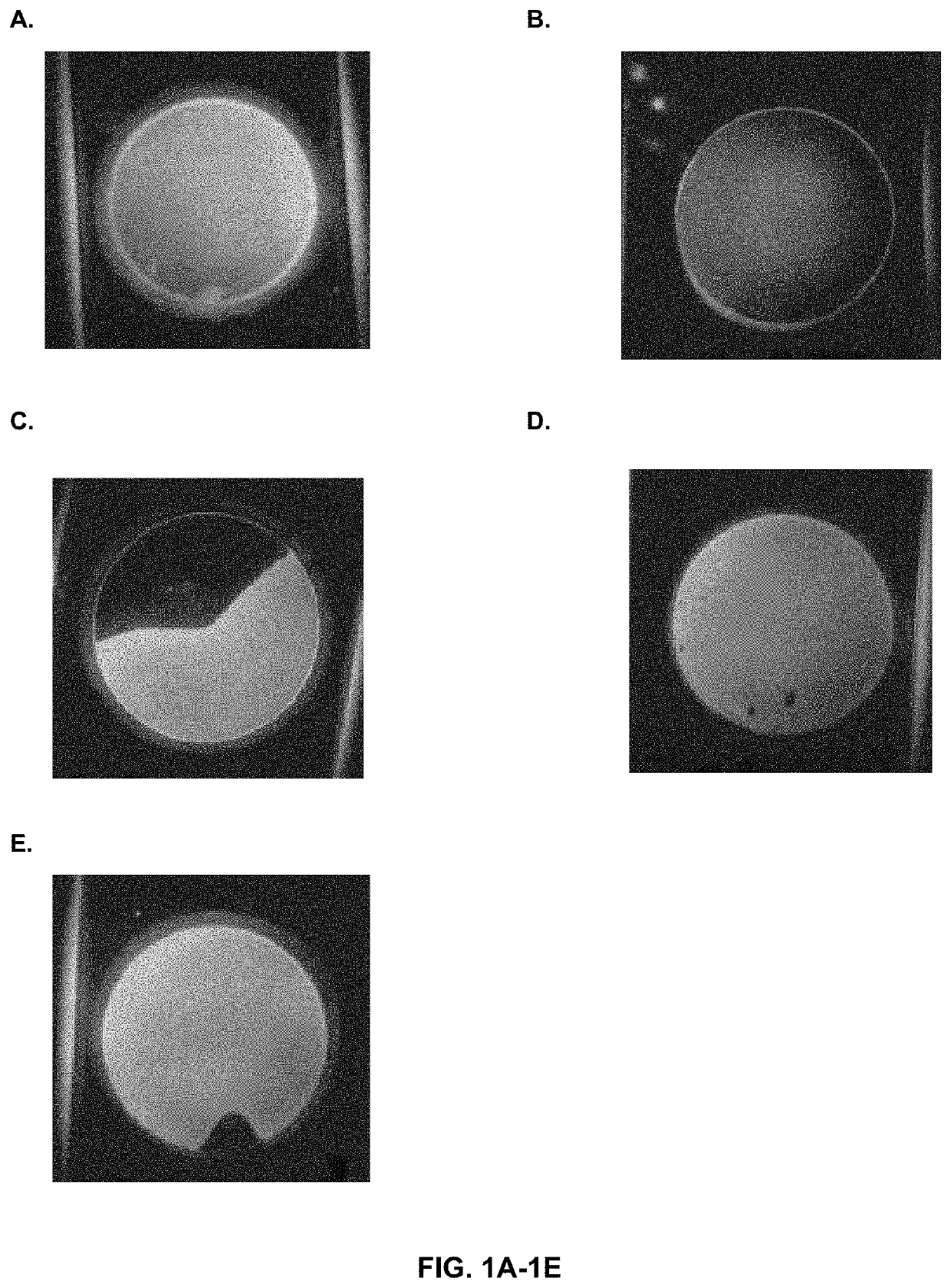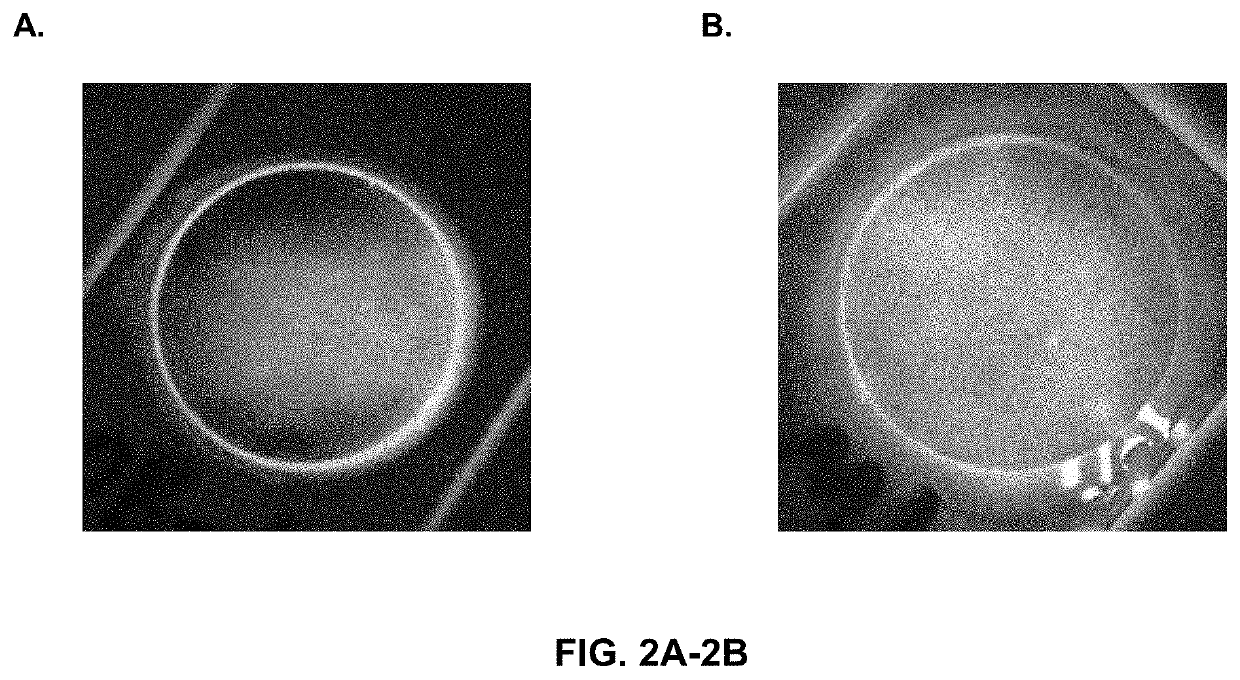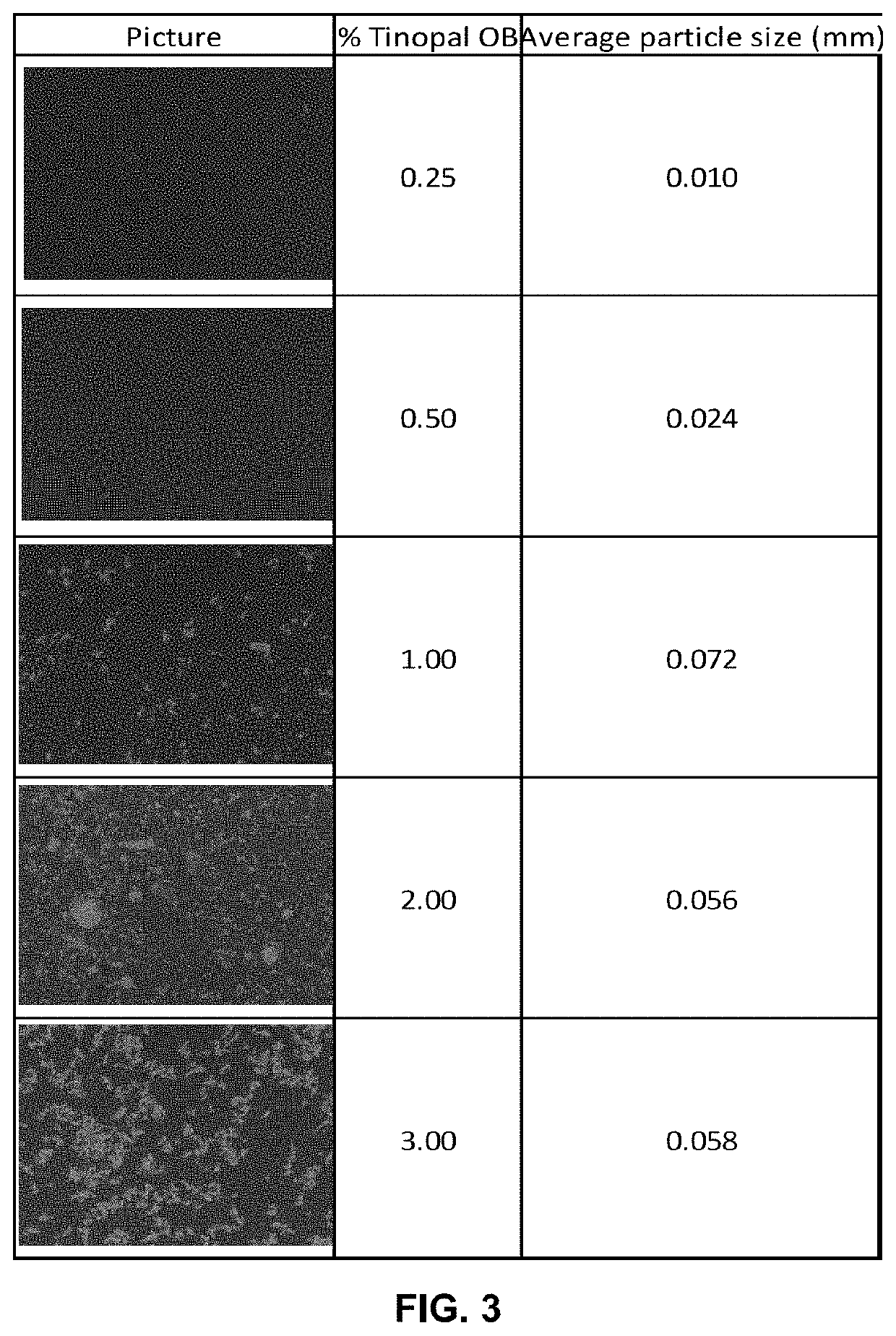Process and premix for incorporating optical brighteners into a polymeric composition
a technology of optical brighteners and polymeric compositions, applied in the direction of coatings, adhesives, etc., can solve the problems of affecting the appearance of materials, nozzles clogging, and none of these documents disclose the methods of dispersing optical brighteners into polymeric compositions, etc., to facilitate leakage detection, excellent adhesive properties, and minimal to no sedimentation
- Summary
- Abstract
- Description
- Claims
- Application Information
AI Technical Summary
Benefits of technology
Problems solved by technology
Method used
Image
Examples
example 1
y of Tinopal® OB CO in Various Silanes
[0222]Several different silanes and tetrabutyl titanate were tested for their ability to dissolve a commonly used optical brightener, 2,5-thiophenediylbis(5-tert-butyl-1,3-benzoxazole) (Tinopal® OB CO). The following silanes were tested: (3-Glycidyloxypropyl)trimethoxysilane (GLYMO), vinyltrimethoxysilane (VTMO), 3-(trimethoxysilyl)propyl methacrylate (MEMO), tetrabutyl titanate (TnBT or TBT), a cocktail of GLYMO+VTMO+TBT (2%+2%+0.7% by weight respectively), and a mixture (mixture A) in which the main intermediate has the following structure:
[0223]Of these silanes, GLYMO contains both alkoxy groups and glycidyloxypropyl group; VTMO and MEMO contain alkoxy groups but no glycidyloxypropyl group; and mixture A is enriched in glycidyloxypropyl groups. TnBT contains alkoxy groups but no glycidyloxypropyl group.
[0224]The conditions used to mix the samples were as follows: 0.072 g of Tinopal® OB CO was added to 10 g of the different compounds in a 20 m...
example 2
y of Various Optical Brighteners in GLYMO
[0229]As demonstrated above, GLYMO was effective for dissolving Tinopal® OB CO. To determine if other optical brighteners can be dissolved in GLYMO, several different optical brighteners were tested for their ability to dissolve in (3-Glycidyloxypropyl)trimethoxysilane (GLYMO). In addition to Tinopal® OB CO, a stilbene derivative OBA (hexasodium-2,2′-[vinylenebis[3-sulfonato-4,1-phenylene)imino[6-(diethylamino)-1,3,5-triazine-4,2-diyl]imino]]bis(benzene-1,4-disulphonate); Tinopal® SFP), a stilbene-benzoxazoline OBA (benzoxazole, 2,2′-(1,2-ethenediyldi-4,1-phenylene)bis-; Benetex® OB-1 HP), and a biphenyl-stilbene (derivative of distyryl biphenyl (DSBP) compound; Benetex® OB-M1) were tested.
[0230]The mixing conditions and experimental procedures used were identical to those described above in Example 1. The results are shown below in Table 3.
TABLE 3Solubility of different optical brighteners in GLYMOAmount ofForms aundissolved# ofclearopticalB...
example 3
n of Different Methods for Mixing Optical Brighteners in Solvent
[0232]In view of the above results demonstrating that other optical brighteners were not effectively dissolved in GLYMO, different mixing conditions were explored to determine if dissolvability could be improved.
[0233]Mixing Method 1 (MM1) was identical to the methods used above in Examples 1 and 2. Mixing Method 2 (MM2) was identical to MM1 except as follows: The optical brightener and solvent are combined under nitrogen. The sample was first heated at 50° C. for 5 mins, then mixed at 3000 rpm for 45 secs, and then heated again at 50° C. for another 5 mins, and mixed at 3000 rpm for 45 secs twice, then heated again at 50° C. for 5 mins, and mixed at 3000 rpm for 2 mins.
[0234]The results obtained using both methods are shown below in Table 4.
TABLE 4Solubility of different OBAs in GLYMO with bothRT mixing (MM1) and heated mixing (MM2).Form a clear solution?Amount of# of particlesMixingMixingundissolved OBABrightnessobser...
PUM
| Property | Measurement | Unit |
|---|---|---|
| composition | aaaaa | aaaaa |
| optical brightener | aaaaa | aaaaa |
| polymeric | aaaaa | aaaaa |
Abstract
Description
Claims
Application Information
 Login to View More
Login to View More - R&D
- Intellectual Property
- Life Sciences
- Materials
- Tech Scout
- Unparalleled Data Quality
- Higher Quality Content
- 60% Fewer Hallucinations
Browse by: Latest US Patents, China's latest patents, Technical Efficacy Thesaurus, Application Domain, Technology Topic, Popular Technical Reports.
© 2025 PatSnap. All rights reserved.Legal|Privacy policy|Modern Slavery Act Transparency Statement|Sitemap|About US| Contact US: help@patsnap.com



